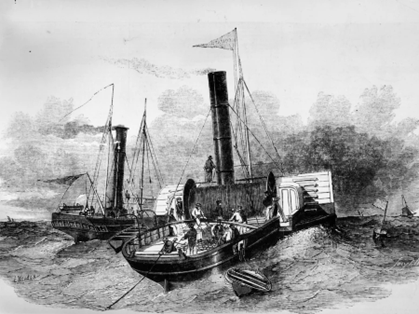Undersea Cables: A Critical Connection
- Giesler LLC
- May 30, 2023
- 2 min read
Submarine communication cables are cables that lay on the seabed between land-based stations to carry telecommunications signals across vast distances, connecting countries around the world. The first cables were laid down beginning in the 1850s, with the first transatlantic telegraph cable becoming operational in August 1858. Later generations of cables also carried telephone and data communications traffic.

Today, nearly 900,000 miles of fiber optic cables run around the world supporting more than 95% of data traffic across the ocean floor. Moving at 26 terabites per second, it is one of the fastest and most reliable methods to transfer information. It is used by nearly every country to transport the world’s information, financial transactions, military, and diplomatic traffic.

As such a critical piece to the digital information age, it is unsurprising that the United States and China has been increasingly at odds over the control of data.
In February 2023, U.S.-based subsea cable company, SubCom LLC, began laying a $600 million, 12,000-mile-long cable connecting from Asia to Europe, via Africa and the Middle East. This cable is known as Southeast Asia–Middle East–Western Europe 6, or SeaMeWe-6. Once finished in 2025, it will connect a dozen countries from Singapore to France, crossing three seas and the Indian Ocean along the way.
While U.S.-based companies have dominated the cable laying business from the beginning, China is ramping up their presence. They are currently developing the world’s most advanced and far-reaching submarine cable network. At $500 million, this Chinese fiber optic cable, known as EMA, will link Europe, the Middle East, and Asia, going through Hong-Kong, China’s island province of Hainan, Singapore, Pakistan, Saudi Arabia, Egypt, and France. The Chinese firms involved in the project are planning to finalize contracts by the end of the year and have the EMA cable also finished by the end of 2025.

In the past out of concern of China’s growing influence, the U.S. government has blocked licenses for planned private subsea cables that would have connected the United States to Chinese territories. The U.S. has stated that countries should prioritize security and privacy by “fully excluding untrustworthy vendors” from wireless networks, terrestrial and undersea cables, satellites, cloud services and data centers.
With these two competing submarine cable networks, global internet infrastructure could become divided over the next decade. Countries could be forced to choose between using Chinese-approved internet equipment or U.S.-backed networks, entrenching divisions across the world and making it more difficult and less secure to carry out global commerce. The results of the submarine cable network competition between the United States and China could determine who achieves economic and military dominance for decades to come.
Sources:




Comments